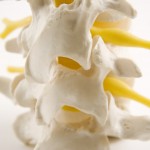
The end goal of chiropractic care (at least in our office) is to retrain the spine to maintain its proper position so that the body can naturally heal and adapt to any problems that may occur in everyday life. This is why when you first begin chiropractic care, you will likely have to visit on a fairly frequent basis, but over time, your visits should occur less often and adjustments will likely be quite minor. This is a good thing. It means that your spine is, in fact, learning to retain its proper shape and position.
However, like any healthcare initiatives, caring for your adjustment is not just your chiropractor’s job. The patient needs to take responsibility and do what they can to maintain the adjustments they receive. Doing so will help expedite the spine’s retraining process, but it’s also just good practice for your body. After all, a backbone and spinal cord that are in the proper position provide optimal performance for your entire body, enabling you to live a healthy, happy, pain-free and productive lifestyle.
So what can you do to help maintain a chiropractic adjustment?
First, after the adjustment, you should get up from the adjusting table slowly and cautiously. Do not move quickly or jerk your neck from side to side. Also, do not rub, probe or poke the area that has just been adjusted.
Take some time to let your body “settle” into the new adjustment. Do not undertake any strenuous activity in the hours immediately following your appointment. In general, avoid putting unnecessary strain on your spine. Don’t bend at the waist to lift objects; instead, keep your spine straight, bend at the knees and use your leg muscles to hoist heavy objects. A good habit to get into is to walk for 5-10 minutes after your adjustment – it allows the body to adapt to the new position and helps to keep motion in the spine. This is a good idea especially if you have a long car ride immediately following an adjustment.
Support your newly straightened spine by engaging in an exercise routine that encourages strengthening the core and back muscles (See our post on strengthening your core). Yoga and Pilates are both good options. If you lift weights, avoid leaning forward at the neck. Do sit-ups on an exercise ball instead of on the floor. If you’re doing lower back exercises, don’t extend the spine beyond 180 degrees. Avoid any stretches that force the body into unnatural positions.
Drink plenty of water. Water is extremely important for the spine and back. For example, intervertebral discs consist largely of water (at birth, discs are about eighty percent water, although this usually declines with age). Therefore, keeping the body well hydrated by drinking water regularly is important to nourish the spinal discs and help keep them healthy.
As we go about our days, we participate in a number of activities that may cause spinal havoc. Using computers and driving both force our shoulders and arms forward, thus causing the neck and spine to curve. Take time away from these positions every 20 to 30 minutes to stretch. If you sit at a desk all day, make it ergonomically friendly in order to properly care for your spine and all other effected extremities. Sitting is very hard on the lower back so if it’s possible, sit on an exercise ball or balance cushion – or choose a chair that encourages core strength to hold your spine straight.
Make good decisions about the shoes you choose. Regardless of their purpose, the shoes you wear should be well balanced, flexible and comfortable. At night, sleep on a firm mattress, and choose a pillow that supports the head so that the neck vertebrae are neutral (level with the rest of your spine). Avoid sleeping on your stomach.
It may sound like a lot of work to keep your body in optimal shape, but the benefits of caring for chiropractic adjustments not only make good sense … they also make for healthier, happier people.
REFERENCES
http://www.spine-health.com/







